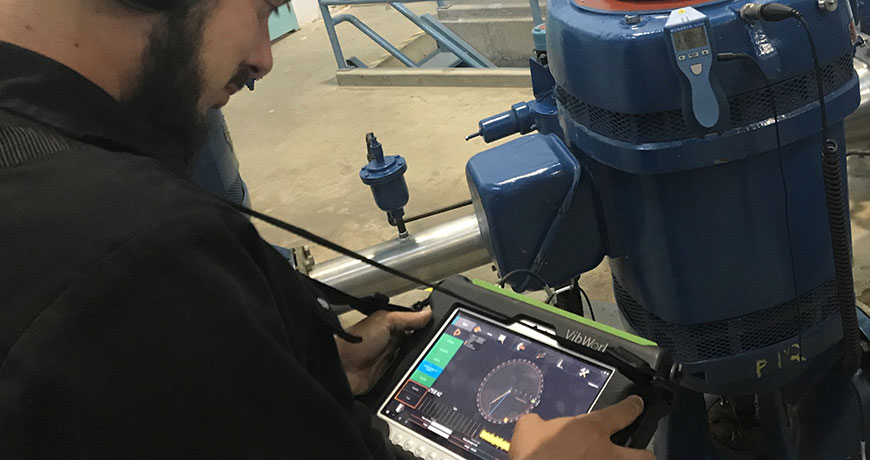There are a lot of aspects that need to be taken care of in condition monitoring. Field balancing is one of those. There are two types of balancing: static and dynamic. The first one deals with balancing in a controlled environment and another one is balancing a piece of equipment in the field under field conditions. When you have balanced an asset against a number of parameters, you know when there’s an unbalance in the equipment. There are different defects that can be caught using a balancing frequency or other parameter. There are a lot of causes for unbalance such as corrosion, part damage, assembly error, and other machining tolerance errors.
The equipment that we need in the field includes: a balancing tool—whether it’s traditional or some modern device—that does the job of balancing the machine. When you are evaluating a machine, you can run different analyses to know what needs to be done to fix the unbalance found in the machine. The standard procedure could be a process starting with calculating the amplitude of the unbalance, then coming up with a correction weight that can be attached to the piece of the equipment to balance the machine. You can try this method until you get the desired results. Download our 5-Step Balancing Procedure – A simple and effective procedure for doing field balancing.

There are some standard specifications provided by ISO based on rotor weight and rpm of the machine. These provide general guidelines to check the balance of the machine but you can decide the specifications based on the evaluation of the rotor. When you are in the field, removing weight accurately is quite hard. It is very difficult to determine the exact weight you have taken out. Adding weight and keeping track of it is comparatively easy. Any person looking to start in field balancing should start with learning about graphic balancing and studying the tools.
Going with a proper alignment training course and field balancing training course would be the best choice, where you can learn to understand the problem, get to know the right tools, and learn from understanding the graphical examples. Customers always want to know the type of weights that you have used, their position, and how they are balancing the machine, so you should have that information at hand in the field. The technicians should know the resonance against different frequencies so that they can capture the right data and make decisions based on that to fix the issue right away.
A given piece of equipment doesn’t always need weight to balance it. Sometimes cleaning a dirty piece of equipment goes a long way. You have to make sure that the equipment is clean before you go about balancing the machine. You have to pay attention to your machine data, see what it is telling you, and then make an informed choice to eliminate the defects. You have to start with laying the groundwork first, like checking for soft-foot or rust that can throw off your readings. The best way to get it done is to let the programmers and providers work together to make necessary enhancement towards better field balancing.
Hear more from Gary James in this podcast by James Kovacevic and learn more about static & dynamic balancing differences, knowing resonance against different frequencies, and his advice and knowledge of field balancing.
Filed under:
Balancing by Gary James CRL
